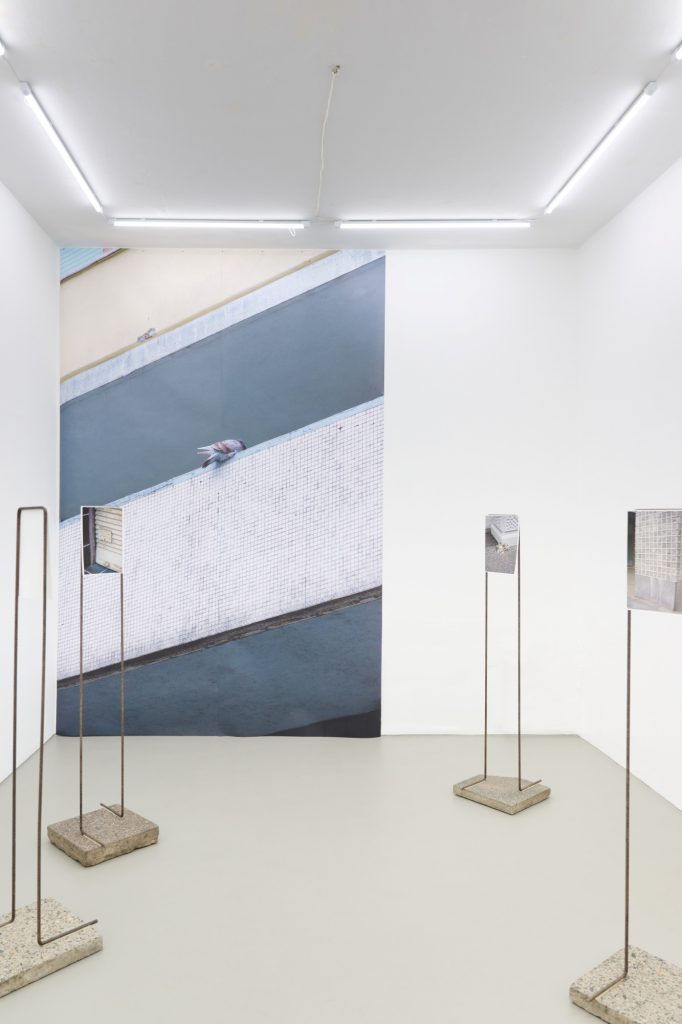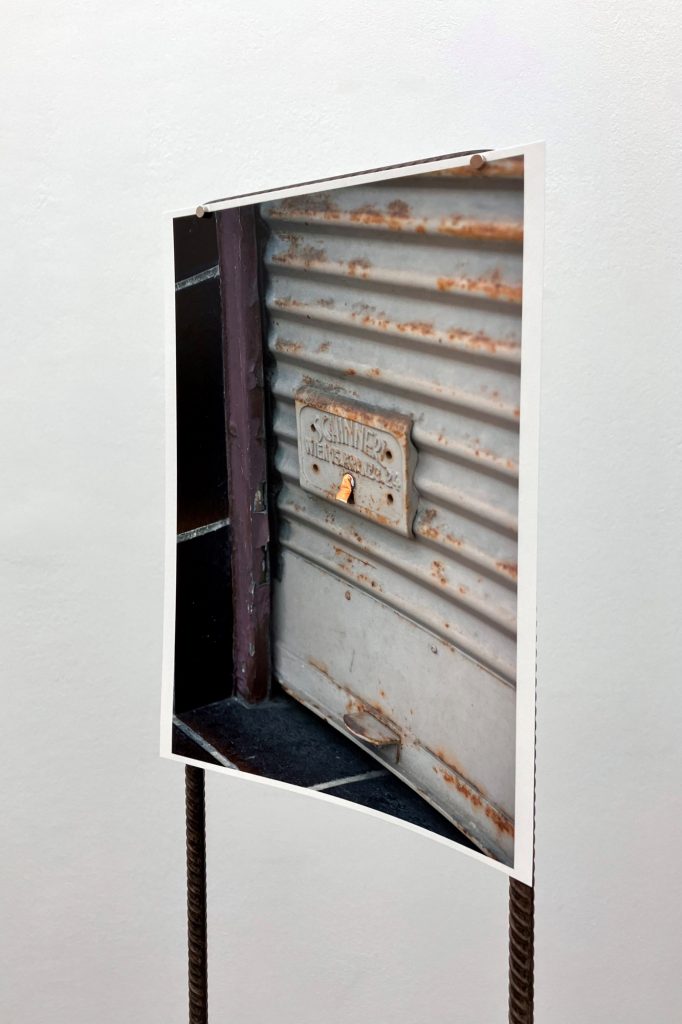

Many architects fear time. When they think about their designs, they think about white walls, clean windows and immaculate stone. They are enthusiastic about their idea and their creation, but not about what comes next. Because what comes next is reality. Materials corrode, fungi spread, people lay hands on things and change them. The traces that appear this way we call „patina“. This appearance is not planned, does not come from above, but grows from below. If architecture means authority, patina means anarchy. For architects, it is a loss of substance, a contamination of their idea. In the eyes of the residents, however, it is a gain in freedom and a testimony to its history. For a city without patina may have a place in space, but not in time.
The five photographs in this exhibition were taken during travels over the past few years. They were taken in Massa, Salzburg, Songdo, Plovdiv and Vienna. As different as the architecture, topography and history of these places are, what they have in common is the disruption of an original plan, the disappointment of an expectation. What is shown in these pictures is, in this sense, the friction between idea and reality.


The motif of the wall-sized wallpaper comes from the Tuscan town of Massa. The town, famous not only for its Carrara marble but also for its anti-fascist and anarchist movements, today is dominated by buildings from the 1970s and 1990s. The dove, symbol of the international peace movement, appears unimpressed by this post-modernist urban planning. As if it wants to sabotage the dreams of the past.
A somewhat similar rebellious gesture can be seen in the two cigarette motifs: In the first picture, someone has stuck a cigarette butt into the shutter lock of a Viennese shop, as if he wanted to inscribe himself into the architecture of the city. In the second picture, which comes from the Bulgarian city of Plovdiv, an entire window has been converted into an ashtray. It is part of the central post office building, which was built during the Soviet era and today, in the midst of the 8,000-year-old city, looks like a spaceship slowly falling apart.



The last two pictures in the exhibition show a natural process of decay: The base of a gate in Salzburg was originally intended to be protected from passing carriages by a deflector made of sandstone. However, the material used, a stone typical of the city, is not very durable. The rain of a century has almost completely dissolved the deflector. Having become superfluous in its function, it has never been restored. Similarly outdated is the outgoing granite column in Songdo, South Korea. Songdo is considered the world’s first smart city. The city was designed on the drawing board at the beginning of the millennium and built within just two decades. However, the concept of a fully monitored and technologically optimized city has not caught on. While nature has already begun its processes of destruction, two-thirds of the city still remain uninhabited.

text: Clemens Espenlaub
photos: Nils Bornemann (room) & Bianca Pedrina (details)
